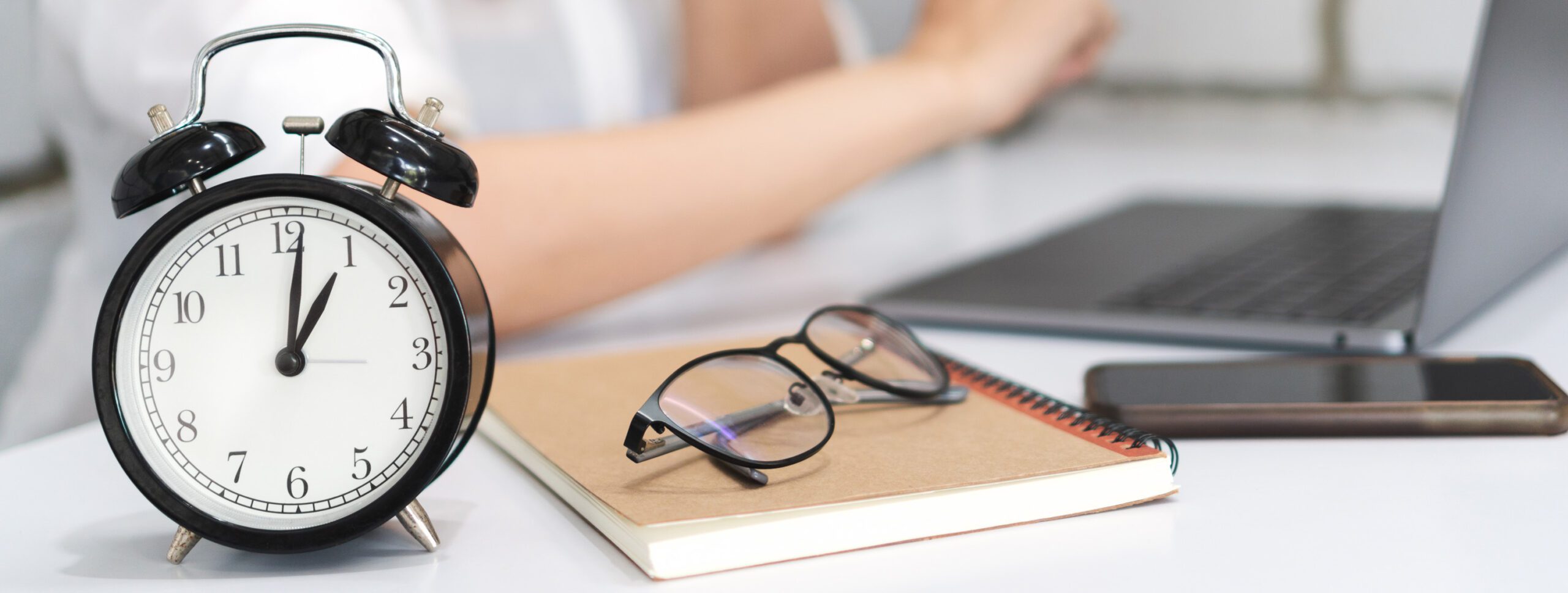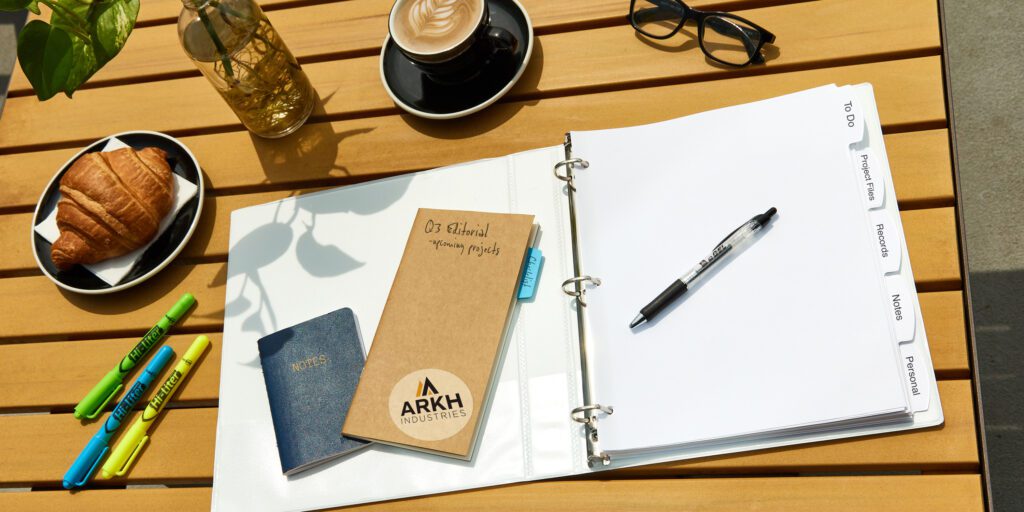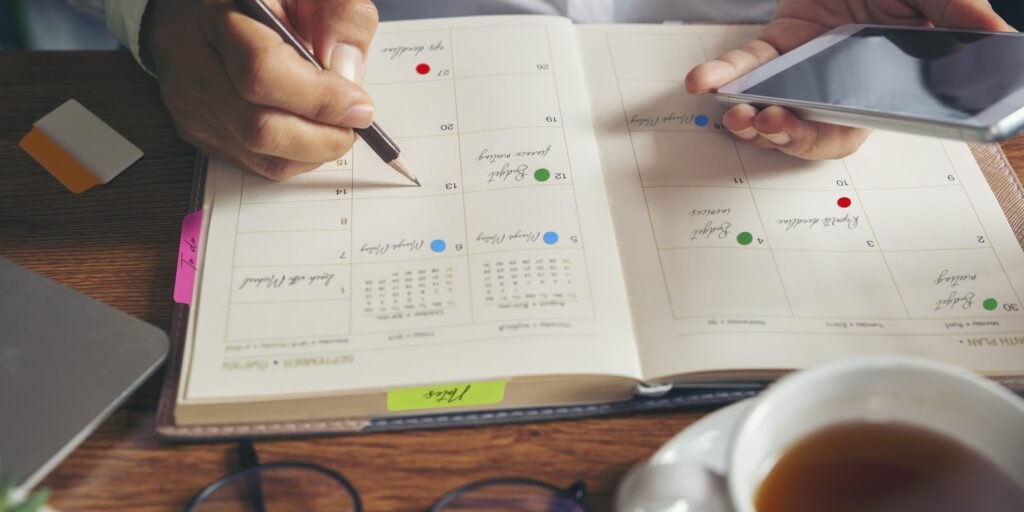
5 Tips to Boost Work Productivity at Home
Estimated reading time: 7 minutes
Learn how to manage your time and stay motivated when working remotely
Mandatory remote work during the COVID-19 pandemic certainly proved that Americans could work from home when needed. According to Global Workplace Analytics, “69% of employers offer remote work on an ad hoc basis to at least some employees, 42% offer it part-time, 27% offer it full time.”
The continued rise of the hybrid office truly comes down to productivity. A Stanford study for performance found that productivity increased by 22% for remote workers. 800 employers were surveyed by benefits consulting firm, Mercer. 94% of them stated that productivity was the same or higher for remote workers. Do you want to boost your performance while working remotely? This article will explore 5 ways office professionals are boosting productivity while working from home.
More articles you might like
- Do Planners Help with Goals? Tips to Help You Achieve
- Top 5 Home Office Organization Tips
- 7 Quick & Easy Tips for “How Do I Organize My Desk?”

1) Go outside to recharge your productivity battery
Humans need sunlight. In fact, sunlight has a host of health benefits and just viewing nature can enhance our well-being. If you’re in a slump or feeling stuck, simply going outside for some sun and a view of something growing can make you feel better and put you in a more positive mood.
Furthermore, a Danish study on the impact of nature on creativity, suggests natural environments greatly benefit creative professionals. Even if your position isn’t creative, creative thinking can help boost problem-solving and help you be more productive. The study concluded that:
- Nature enhances creative ways of thinking.
- Nature helps with recharging the focus needed when developing ideas.
- Nature especially plays a role in the Preparation phase and the Incubation phase of the creative process.
- The Perceived Restorative Dimensions (‘Nature’, ‘Space’ and ‘Serene’) are important for creative professionals.
2) Explore productivity apps, tools and techniques to help you
The PCMag.com list of the best productivity apps is a great place to start when looking for ways to boost productivity. The options range from free and low-cost options on your phone, to project management software for the whole team.
However, don’t ignore productivity tools. A personal planner and a convenient, well-placed desk calendar never need an internet connection or a charged battery to help you work more efficiently.
There are also the trending cube-shaped timers that office professionals are raving about. Basically, a kitchen timer with different time durations on each side. The idea is to use the timer to practice the Pomodoro Technique, which breaks up work into more focused and productive chunks of time.
Here are some of the most popular time management techniques for boosting productivity.
- 80/20 Rule – Assign numbers to problems; the more important the problem, the higher the score. Group problems by the root cause. Add up the score for each group. Tackle the group with the highest scores first.
- Eisenhower Matrix – Organize tasks into four quadrants based on importance and urgency. Work only on tasks that fall in the important and urgent quadrants. Delegate or delete other tasks.
- Time Blocking – Divide your day into blocks of one hour or half an hour. Estimate the time needed for each task and fill them into the time blocks in your day. Allow for time between each block for adjustments.
- Pickle Jar Theory – Visualize your task list as a pickle jar filled with sand, pebbles and rocks. Rocks are the most important task, pebbles are tasks that can be done another day or by someone else, sand are the “disrupting tasks” such as phone calls and emails. Make a task list starting with “rock tasks” and ending with sand.
- Eat that Frog Technique – Named after a Mark Twain quote, it boils down to starting your day with the most daunting task in order to get it out of the way. Everything afterwards feels much easier.

3) Create a dedicated productivity planner for work
If your personal planner works for you, great! There are many ways to use a personal planner to help you be more productive. If you find it too distracting, create a dedicated planner just for work.
One of the benefits of a dedicated work planner is that it’s a great tool for physically and mentally signaling the beginning and end of the day. Start your day by organizing your to-do list and reviewing appointments and deadlines. Check off your tasks and put away your work planner at the end of the day.
PRO TIP: During the “afternoon slump” take a break to review goals in your work planner. Keeping “your eyes on the prize” can give you the productivity boost you need to finish the day strong.
4) Set aside space where you can be productive
First, try to limit distractions. Maybe that means closing your office door. Or if you work in a common area of the house, maybe it means simply facing your workspace away from the TV or kitchen. Wherever you work, keep it as clean and organized as possible. It’s hard to focus or be productive in the midst of clutter.
Next, if you have control over ambience, think about light and sound. Try different types of lighting to reduce eyestrain. Experiment with whether you work better in silence or with background noise. Get a plant to bring some nature to your workspace.
Lastly, think about how you physically feel in your workspace. Make sure you have good back support and your laptop is at the right height for typing comfortably when sitting up straight. Give yourself room to move and stretch your legs.
5) Set WFH boundaries with yourself and others
Setting boundaries for a healthier work-life balance starts with you. If you don’t respect your time, it’s hard to expect others to do so. Make sure that you’re taking your breaks. Set reminders on your phone if you have to, because taking effective breaks actually increases productivity.
Next, align with your team on expectations for availability, working hours and response times. This helps to draw a line between work time and off-work time. Giving yourself time to fully relax is essential for preventing burnout, which saps productivity and can have negative effects on all areas of your life.
Lastly, create some boundaries within your household if you can. Whether it’s with your partner, your family or roommates, try to make it easy for them to know when you’re working and when you’re not. If possible, set aside 1-2 hours per day for uninterrupted work time. Save your most difficult tasks for those hours.
Boost your productivity while working from home
Make sure you’re going outside during the day to reap the mental and physical benefits of sunshine and nature. Look to technology for productivity apps to give your performance a boost, but don’t discount analog tools.
Create a dedicated planner for work and get a good desk calendar. Try a cube timer to increase focus with the Pomodoro Technique. Explore other tried-and-true time management techniques and find the one that works the best for you.
Find a workspace where you can limit distractions and have some control over light and sound. Stock up on office supplies to organize your space. Give yourself plenty of room to move and stretch your legs.
Set boundaries between work and life with yourself, your coworkers and others in your household. Take regular breaks, manage availability expectations and try to schedule a few hours each day for uninterrupted work time.
What’s the best advice you’ve ever received for staying productive? Connect with us on LinkedIn or Facebook and share your thoughts.



